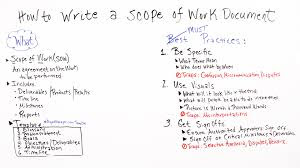How to Write a Project Scope: A Step-by-Step Guide
A well-defined project scope is the backbone of any successful project. It outlines what needs to be done, sets clear expectations, and prevents unnecessary delays or scope creep. Whether you're a project manager, business owner, or team leader, knowing how to write an effective project scope document is crucial.
In this guide, we’ll break down the process of writing a project scope, key components to include, and best practices to ensure clarity and efficiency.
What is a Project Scope?
A project scope is a detailed document that defines:
The project’s objectives, deliverables, and goals
Tasks and activities required for completion
Deadlines and timelines
Budget and resource allocation
Boundaries (what’s included and excluded)
A clear scope helps stakeholders stay aligned and minimizes misunderstandings.
Why is a Project Scope Important?
Without a proper project scope, teams may face:
✅ Scope creep (uncontrolled expansion of project tasks)
✅ Budget overruns
✅ Missed deadlines
✅ Miscommunication between teams
A well-written scope ensures:
✔ Clarity on project expectations
✔ Efficient resource management
✔ Better stakeholder alignment
Step-by-Step Process to Write a Project Scope
1. Define Project Objectives
Start by answering:
What is the purpose of this project?
What problem does it solve?
What are the expected outcomes?
Example:
Objective: "Develop a new e-commerce website to increase online sales by 30%."
2. Identify Key Deliverables
List all major outputs, such as:
Completed designs
Functional software
Training manuals
Final reports
3. Set Project Boundaries (Inclusions & Exclusions)
Clearly state what’s part of the project and what’s not.
Example:
Included: Website design, payment gateway integration
Excluded: Social media marketing, content writing
4. Define Milestones & Timeline
Break the project into phases with deadlines:
Phase 1: Research & Planning (2 weeks)
Phase 2: Development (4 weeks)
Phase 3: Testing & Launch (2 weeks)
5. Allocate Resources & Budget
Specify:
Team members involved
Tools & technology required
Estimated costs
6. Identify Risks & Constraints
List potential challenges, such as:
Tight deadlines
Limited budget
Dependence on third-party vendors
Key Components of a Project Scope Document
A strong project scope document should include:
✔ Project Title & Description
✔ Objectives & Goals
✔ Deliverables
✔ Scope Boundaries (Inclusions/Exclusions)
✔ Timeline & Milestones
✔ Budget & Resources
✔ Stakeholders & Roles
✔ Approval Process
Best Practices for Writing a Project Scope
Be Specific: Avoid vague language. Use clear, measurable terms.
Get Stakeholder Approval: Ensure all key parties agree before starting.
Review & Revise: Update the scope if major changes occur.
Use a Template: Standardize your process for future projects.
Common Mistakes to Avoid
❌ Being Too Vague → Leads to misunderstandings.
❌ Ignoring Stakeholder Input → Causes misalignment.
❌ Not Documenting Changes → Results in scope creep.
❌ Overpromising → Leads to unrealistic expectations.
Final Thoughts
A well-written project scope sets the foundation for a smooth and successful project. By defining clear objectives, deliverables, and boundaries, you can keep your team on track, avoid unnecessary delays, and ensure stakeholder satisfaction.
Need a template? Download a free Project Scope Template to get started quickly!

